Day 1 :
Keynote Forum
Knox Van dyke
West Virginia University Medical School, USA
Keynote: The incredible costs of chronic diseases: Why they occur and possible preventions and/or treatments
Time : 10:15-10:55
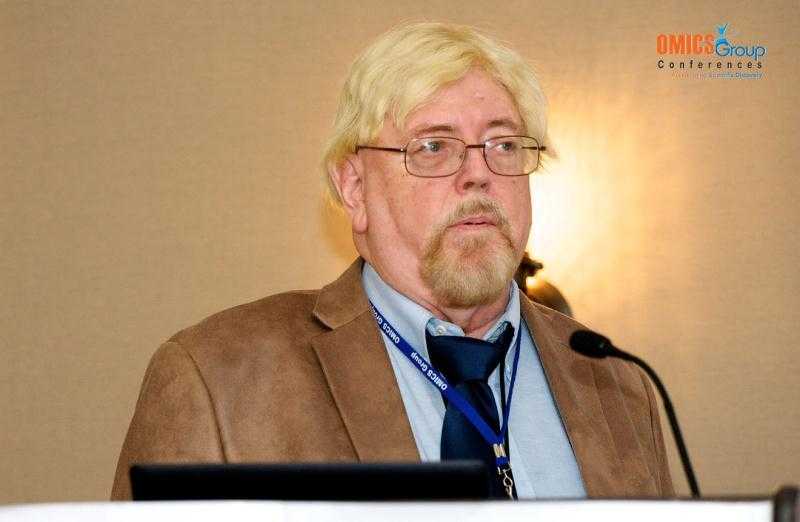
Biography:
Knox Van Dyke has completed his PhD at Saint Louis University in the Department of Biochemistry in 1966. He did Post-doctorate work at West Virginia University, Department of Pharmacology, where he developed the first effective in vitro screening systems for antimalarials still used today. He became an authority on bio and chemiluminescence and the development of drugs. He has made great strides in understanding diabetes and other chronic diseases. He has published more than 400 papers and holds several hundred patents.
Abstract:
Chronic diseases consume about 2.5 trillion dollars from the USA government every year. They are linked to 70% of the deaths that occur each year. After the age of 50, at least 50% of the people have one or more chronic diseases. The difference between acute and chronic diseases is that in acute diseases smaller amounts of unusual peroxide called peroxynitrite (OONO-) are produced while in chronic diseases excessive amounts of peroxynitrite are produced which damages vital biochemical components necessary for life. In addition OONO- causes death of crucial energy producing mitochondria, which kills cells and tissues. However, a key step in chronic diseases was discovered by Dr. Peter Barnes of England when he found that excessive peroxynitrite that is made continuously in chronic disease states, damages an epigenetic control system that allows anti-inflammatory steroids to deacetylate the acetylated histones which keep inflammation constantly turned on. In other words steroids do not work to shut off chronic inflammatory diseases. This is a huge problem because very few effective compounds have been found which inhibit chronic inflammation caused by excessive peroxynitrite. The substances that have been found, which are partially effective also causes major side effects so the treatment is worse than the disease. Peroxynitrite causes oxidation and nitration/nitrosylation/nitrosation (3N’s) creating damage. Therefore, we must find antioxidant/anti 3N substances which act in a continuous manner to thwart the damage from OONO-. We have found a variety of effective substances that control excessive peroxynitrite and if used early could prevent or treat these diseases.
Keynote Forum
Johns Stephen Batchelor
Central Manchester Foundation Trust, UK
Keynote: Coagulopathy in traumatic brain injury: Current concepts and controversies
Time : 11:15-11:55
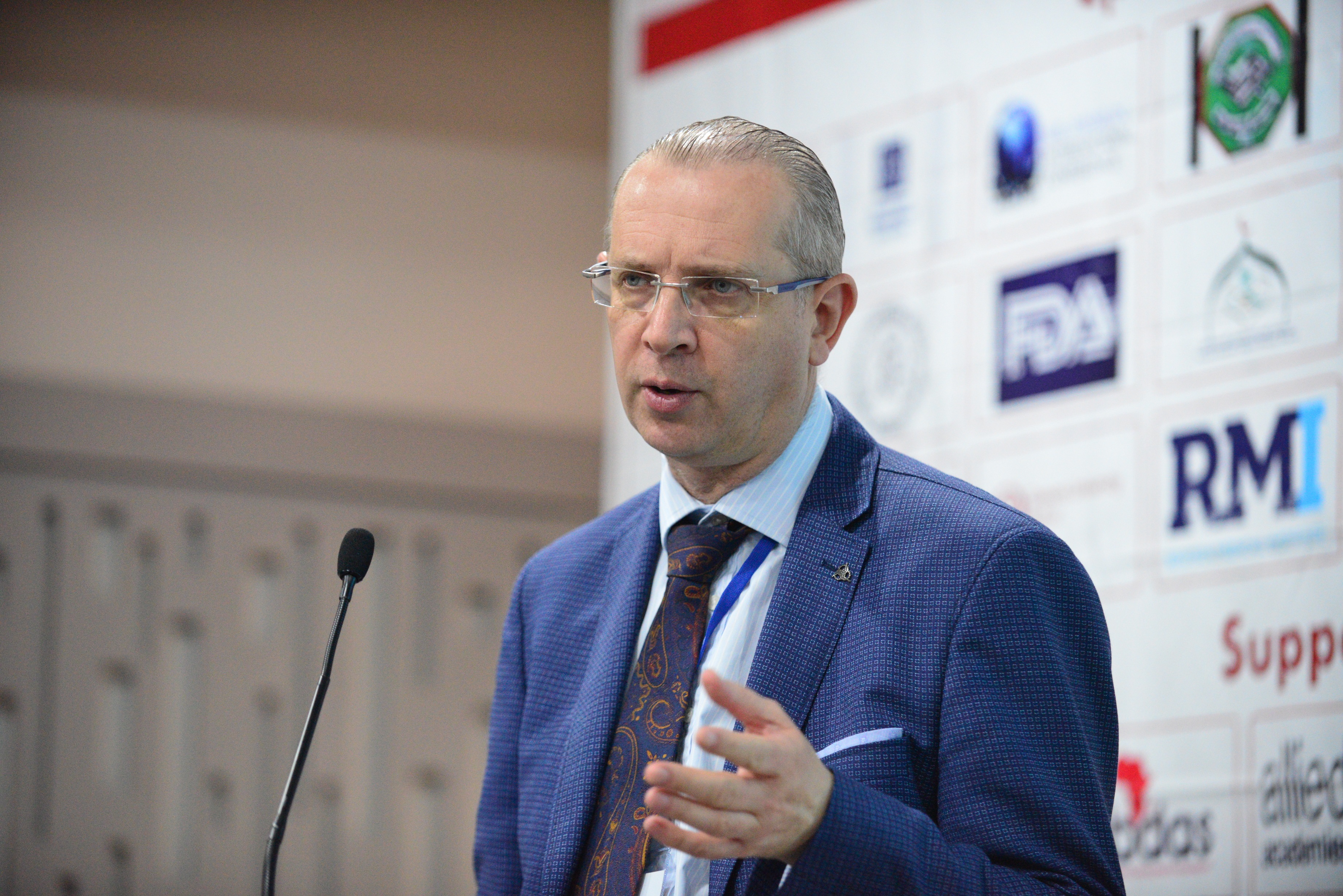
Biography:
Johns Stephen Batchelor is currently a Consultant in Emergency Medicine at Central Manchester Foundation Trust, England UK. He is also Honorary Lecturer at Manchester Metropolitan University. He was graduated from Leeds University, England in 1982. He is a Fellow of the Royal College of Surgeons of Ireland and Fellow of the Faculty of Emergency Medicine of England. He undertook his MD thesis at University College London. He has written extensively on the subject of minor head injuries. His current research interest lies in the area of risk factors for intracranial hemorrhage in both adults and pediatrics secondary to coagulopthy and thrombocytopenia.
Abstract:
Coagulopathy following traumatic brain injury (TBI) is a well recognized pathophysiological state following head injury. A meta-analysis by Epstein et al (2014) found that the weighted average number of patients with coagulopathy following traumatic brain injury was 35.2%. The temporal pattern of coagulopathy is variable. Some patients have an early transient rises in coagulation parameters others a more delayed response. The most important coagulation parameter is currently an area of debate. Some others suggest that the PT is the most important predictor of hemorrhagic progression. Other authors suggest that thrombocytopenia is the most important predictor of hematoma progression. The presence of traumatic brain induced coaguopathy increases the risk of hematoma progression by an odds ratio of 6.897. The aim of this talk is to review the characteristics of this disease process and to discuss possible etiological mechanisms responsible for this response.
Keynote Forum
C Cameron Yin
University of Texas MD Anderson Cancer Center, USA
Keynote: Clinical application of molecular testing in myeloid leukemia
Time : 11:55-12:35

Biography:
C Cameron Yin has received MD from Beijing Medical University and PhD from the University of Wisconsin-Madison. She is currently an Associate Professor in the Department of Hematopathology at the University of Texas MD Anderson Cancer Center. In addition to clinical responsibilities on the leukemia, lymphoma and molecular diagnostic services, she has been actively participating in multiple research projects in the molecular genetic abnormalities in leukemia and lymphoma, which has led to over 100 research papers and over 20 book chapters.
Abstract:
It has been assumed that immunoglobulin (Ig) can only be produced by B-cells and plasma cells. Recently, we have reported that Ig can be expressed by other types of cells such as epithelial cancer cells. In this study, we studied Ig expression in acute myeloid leukemia (AML). We found that Ig was expressed at a high frequency and level in AML cell lines and primary myeloblasts, but not in monocytes or neutrophils from healthy controls by RT-PCR, immunohistochemistry and flow cytometry. We further assessed rearrangements of IgG VHDJH transcripts and found that AML-IgG had restricted (AML cell lines) or biased (primary myeloblasts) V usage. Moreover, its gene rearrangements showed evidence of somatic hypermutation. Anti-human IgG reduced cell viability and induced apoptosis in AML cell lines, whereas anti-human IgK increased cell migration and chemotaxis. Our findings suggest that AML-Ig may play a role in leukemogenesis and AML progression and it may serve as a useful molecular marker for monitoring minimal residual disease or designing target therapy. Study on the correlation between level of AML-Ig expression and morphologic and molecular genetics features as well as clinical outcome of AML patients is in progress.
- Hematology | Hematologic Oncology
Session Introduction
Knox Van Dyke
West Virginia University Medical School, USA
Title: Diabetes 1, 2 and 3 (Alzheimer’s disease) cause defects in carbohydrate metabolism and originate from chronic inflammation linked to excessive peroxynitrite metabolism which kills mitochondria
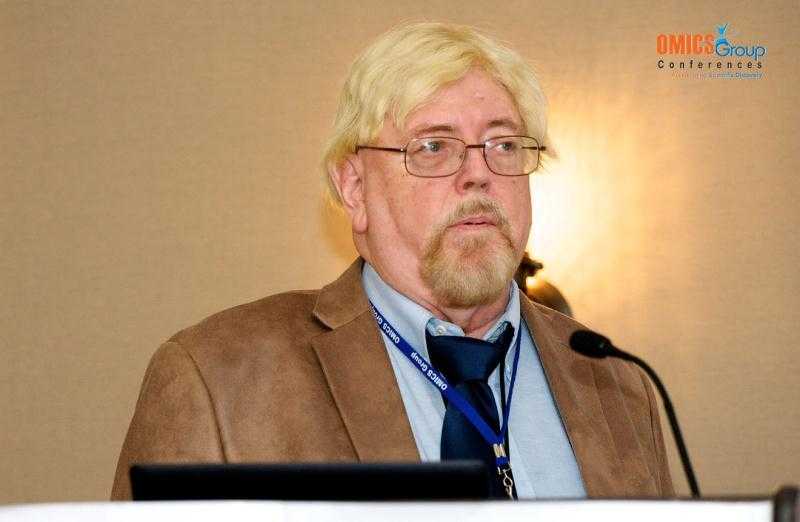
Biography:
Knox Van Dyke was awarded his Doctorate degree in 1966 at Saint Louis University in the Department of Biochemistry of Nobel Prize winner Dr. EA Doisy, the discoverer of the estrogens and vitamin K. His did his Post-doctoral work at West Virginia University Medical School where he developed the first effective anti-malarial drug screening, still in use today. He became an authority on cellular chemiluminescence (luminescence) and cancer drug resistance reversal. He has made great strides in understanding chronic diseases e.g., Diabetes and Alzheimer’s disease.
Abstract:
Diabetes and Alzheimer’s diseases are chronic inflammatory diseases which result in a variety of untoward pathological consequences. Is it possible that the linchpin of these diseases have a common origin which if understood could either prevent or properly treat these diseases? Physician’s, scientists and drug companies tend to treat diseases with substances which treat obvious symptoms but do not treat the root cause. It is time to change this situation and direct attention to the root cause of these diseases for prevention or best treatment. Dr. Peter Barnes demonstrated that chronic inflammatory diseases destroy the epigenetic regulatory mechanism (via nitration) which causes the deacetylation of histones. Acetylation of histones causes inflammation. Nitration of histone deactylase 2 (HDAC-2) destroys the mechanism used by anti-inflammatory steroids. The key to the kingdom of diabetes and Alzheimer’s disease is control or diminish the substance that causes the chronic nitration which is the peroxide-peroxynitrite (OONO-) or its carbon dioxide derivative peroxynitrite carbonate. We will demonstrate how we can control OONO- which emanates from streptozotocin and causes diabetes and Alzheimer’s disease.
Sihem Bihorel,
University of Florida, USA
Title: Mechanisms of hematological toxicity of antibody drug conjugates: Role of drug-load release
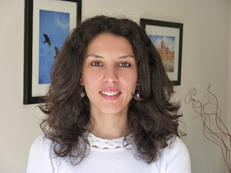
Biography:
Sihem Bihorel utilizes quantitative systems pharmacology approaches to guide the development of new therapies and the identification of promising combination therapies as well as of novel biomarkers in oncology. She integrates quantitative systems pharmacology with PK/PD modeling and simulation to advance drug discovery and development and leverage the understanding of drugs action which holds great promise to facilitate translational research. Her research is also focused on investigating how priming solid tumors with a pro-apoptotic agent then combining a subsequent large protein therapeutic and an antiangiogenic agent can defeat drug resistance and treatment failure in cancer and further enhance the efficacy of targeted anticancer agents and translating these findings toward clinical settings. Earlier she has held the position of Research Assistant Professor at the State University of New York at Buffalo where she was also trained as a Post doctorate and received her PhD from the same.
Abstract:
Purpose: To develop a unified pharmacokinetic (PK)/pharmacodynamic (PD) model that describes the concentrations time profiles of the only two FDA-approved antibody-drug conjugates (ADCs) which are trastuzumab emtansine (TDM1) and Brenduximab Vedutin (SGN35) and their induced myelosuppression including thrombocytopenia for TDM1 and neutropenia for SGN35 in normal and human cancer xenograft mice.
Methods: Balbc mice, normal or nude xenografted with human Her2-positive breast cancer for the TDM1 treatment arm or Hodgkin lymphoma for the SGN35 treatment arm, were intravenously injected with either a large single does (SD) or multiple medium doses (MD) every week for two weeks. The investigated doses were 120 mg/kg (SD), 10 and 30 mg/kg (MD) for TDM1 and 15 and 45 mg/kg (MD) for SGN35. For each treatment arm group a control subgroup of normal mice were injected with saline. The hematological toxicity induced by both agents was followed by whole blood sampling every 2 days for platelets (PLT) and neutrophils (ANC) measurements using a hematology analyzer. Few blood samples were collected for total trastuzumab concentration measurements performed with a commercially available ELISA kit with a limit of quantification of 2 ng per mL. The plasma concentrations for SGN35, the payloads (DM1 for TDM1 and MMAE for SGN35) as well as the antibodies, trastuzumab (TDM1) and anti-CD30 (SGN35) were extracted from the literature. A non-linear mixed-effect modeling approach was performed using MONOLIX software. Model simulations were performed using Berkeley Madonna. Internal model evaluation was performed using a visual predictive check and the precision of the parameter estimates was assessed by the percent of relative standard errors (%RSE).
Results: A two compartment model with linear elimination described the PK of both ADCs. Similarly, the PK of the payloads DM1 from TDM1 and MMAE from SGN35 as well as the monoclonal antibodies, trastuzumab from TDM1 and anti-CD30 from SGN35, were described with two compartment models and linear eliminations after deconjugations (kdec) from their corresponding ADCs. The thrombocytopenia induced by TDM1 and neutropenia induced by SGN35 were captured with a series of five transit compartments representing proliferative and maturing cells in the bone marrow and the differentiated cells (PLT or ANC) in the blood circulation. A negative feedback loop was used to account for the observed tolerance phenomenon. The half-lives for TDM1 and SGN35 were estimated at 4.8 (32%) and 4.6 (21%) days and the kdec were 0.46 (18%) and 0.12 (13%) h-1. The lifespan for PLT under TDM1 and ANC under SGN35 were 3.73 (12%) and 4.72 (9%) days. Comparison of performance between alternative models suggests that TDM1 and SGN35 myelosuppressions are caused by different mechanisms: ADC binding to FcgR for TDM1 and payload-driven toxicity for SGN35 due to high lipophilicity of MMAE. Model based-simulations suggest that a 6-fold increase and 70% decrease in kdec of TDM1 and SGN35 would improve myelosuppression.
Conclusions: The developed unified PK/PD model well captured TDM1 and SGN35 PK as well as their corresponding payloads DM1 and MMAE and monoclonal antibodies trastuzumab and anti-CD30 plasma concentration profiles. The thrombocytopenia induced by TDM1 and neutropenia induced by SGN35 were also well captured with the suggested unified PD model for myelosuppression. The proposed unified PK/PD model could serve as a general platform for the investigation and prediction of PK and hematological toxicities to other ADCs.
C Cameron Yin
University of Texas MD Anderson Cancer Center, USA
Title: Clinical applications of immunoglobulin expression in acute myeloid leukemia

Biography:
C Cameron Yin has received MD from Beijing Medical University and PhD from the University of Wisconsin-Madison. She is currently an Associate Professor in the Department of Hematopathology at the University of Texas MD Anderson Cancer Center. In addition to clinical responsibilities on the leukemia, lymphoma and molecular diagnostic services, she has been actively participating in multiple research projects in the molecular genetic abnormalities in leukemia and lymphoma, which has led to over 100 research papers and over 20 book chapters.
Abstract:
It has been assumed that immunoglobulin (Ig) can only be produced by B-cells and plasma cells. Recently, we have reported that Ig can be expressed by other types of cells such as epithelial cancer cells. In this study, we studied Ig expression in acute myeloid leukemia (AML). We found that Ig was expressed at a high frequency and level in AML cell lines and primary myeloblasts, but not in monocytes or neutrophils from healthy controls by RT-PCR, immunohistochemistry and flow cytometry. We further assessed rearrangements of IgG VHDJH transcripts and found that AML-IgG had restricted (AML cell lines) or biased (primary myeloblasts) V usage. Moreover, its gene rearrangements showed evidence of somatic hypermutation. Anti-human IgG reduced cell viability and induced apoptosis in AML cell lines, whereas anti-human IgK increased cell migration and chemotaxis. Our findings suggest that AML-Ig may play a role in leukemogenesis and AML progression and it may serve as a useful molecular marker for monitoring minimal residual disease or designing target therapy. Study on the correlation between level of AML-Ig expression and morphologic and molecular genetics features as well as clinical outcome of AML patients is in progress.
Tenzin Saldon
All India Institute of Medical Sciences, India
Title: Study of north Indian blood donors: Attitude, obstacles and motivation towards donation (VP)
Biography:
Tenzin Saldon is a student pursueing in All India Institute of Medical Sciences from India.
Abstract:
Introduction: Continuous efforts are required to motivate people to donate blood, to urge donors to keep on donating blood on a regular basis and to inspire non-donors to start donating blood for sustaining self-sufficiency and matching the ever increasing clinical demand for various blood components. Therefore this study was done to determine the knowledge, attitude, reasons for not donating blood, misconceptions and motivations towards blood donation among people of New Delhi.
Aim: The aim of this study is to access blood donation among people by analyzing their perception and knowledge towards the cause through a questionnaire-based survey. This study also evaluates the reasons of donor deferral in a hospital-based blood bank in India. This can help blood donation centers to attract donors by developing appropriate policies and plans in future.
Materials & Methods: The study was carried out in New Delhi, India. This prospective study was done on group of 135 people during one month period. Blood Donors who visited our blood bank with age >18 years, eligible for blood donation were included in our study. Data collection was done with the help of forms given them. The form was divided into three parts and had fourteen questions regarding obstacles, misconceptions and motivations concerning blood donation. 27 females and 108 males were assessed. The respondents were briefed on the aims of the study and ways to fill the questionnaire. They were also ensured about confidentiality in this entire process. Statistics was then applied to the data and presented in forms of bar graphs for easy interpretation.
Results: The mean age of donor population was 29.3 years (males: 28.9 females: 30.5). Males had higher blood donation knowledge level as compared to females in the study. 53% of males were motivated to give blood during an emergency situation of someone close while 36.5% females were motivated by story of someone being saved from blood transfusion. 28.5% males were influenced by friends. 34% girls were afraid of needles and 30% males are afraid of unknown. The main obstacle was poor information. A message which makes one think had the highest average for a strong campaign (Females: 4.3 males: 3.8). For promoting blood donation (Average 3.9) males found television and radio programs most effective while (Average 4.2) females found personally talking with people who have already donated blood effective. Incentives like getting free blood tests and educational credits were found to lure people. Having proper information, being aware about the technicalities of the process and convenient place/time of donation encouraged people towards giving blood.
Conclusion: It is necessary to follow strict donor selection criteria to make blood donation safe and win the trust of future donors. The entire blood bank staff should share the responsibility of winning the confidence of donors and making blood donation a safe and pleasurable experience. The inputs from people can be useful in implementing relevant donor recruitment and to introduce strategies for maintaining an adequate and safe blood supply.
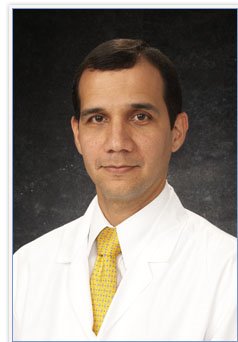
Biography:
German Espino L has completed his training in Internal Medicine, Hematology and Stem Cell Transplantation from Hospital Santo Tomas, Caja del Seguro Social and as a Visiting Physician at the Fred Hutchinson Cancer Research Center. He works as a Consultant in Hematology/Stem Cell Transplantation at the Caja del Seguro Social Hospital and as a Professor of Hematology at the University of Panama. He has collaborated as a coauthor in 5 different papers in reputed journals.
Abstract:
Although Panama is the strongest economy nowadays in the Central America Region, it is difficult to find resources for diagnostic purposes or treatment. In the era of the tyrosine kinase inhibitors we know that patients live longer, but this represents a high economical burden for an Institution with limited resources. In the following paper we present the results of the first 100 patients treated for chronic myeloid leukemia in chronic phase. The patients included are those that started treatment after the first tyrosine kinase inhibitor was approved for use in our institution. We will present our diagnostic approach and our follow up together with the limitations that we have had during this period.
